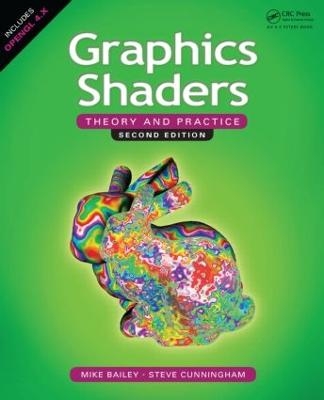
Graphics Shaders
A K Peters (Verlag)
978-1-56881-434-6 (ISBN)
The book starts with a quick review of the graphics pipeline, emphasizing features that are rarely taught in introductory courses, but are immediately exposed in shader work. It then covers shader-specific theory for vertex, tessellation, geometry, and fragment shaders using the GLSL 4.x0 shading language. The text also introduces the freely available glman tool that enables you to develop, test, and tune shaders separately from the applications that will use them. The authors explore how shaders can be used to support a wide variety of applications and present examples of shaders in 3D geometry, scientific visualization, geometry morphing, algorithmic art, and more.
Features of the Second Edition:
Written using the most recent specification releases (OpenGL 4.x and GLSL 4.x0) including code examples brought up-to-date with the current standard of the GLSL language.
More examples and more exercises
A chapter on tessellation shaders
An expanded Serious Fun chapter with examples that illustrate using shaders to produce fun effects
A discussion of how to handle the major changes occurring in the OpenGL standard, and some C++ classes to help you manage that transition
The authors thoroughly explain the concepts, use sample code to describe details of the concepts, and then challenge you to extend the examples. They provide sample source code for many of the book’s examples at www.cgeducation.org
Mike Bailey is a professor of computer science at Oregon State University. Dr. Bailey is a member of ACM, SIGGRAPH, IEEE, ASME. He earned a Ph.D. in computer graphics and computer aided design from Purdue University. His areas of interest include scientific visualization, high performance computer graphics, GPU programming, solid freeform fabrication, geometric modeling, and computer aided design and analysis. Steve Cunningham is a professor emeritus of computer science at California State University Stanislaus. A member of ACM SIGGRAPH, ACM SIGCSE, and Eurographics, he has been actively engaged in computer graphics education for many years.
The Fixed-Function Graphics Pipeline. OpenGL Shader Evolution. Fundamental Shader Concepts. Using glman. The GLSL Shader Language. Lighting. Vertex Shaders. Fragment Shaders and Surface Appearance. Surface Textures in the Fragment Shader. Noise. Image Manipulation with Shaders. Geometry Shader Concepts and Examples. Tessellation Shaders. The GLSL API. Using Shaders for Scientific Visualization. Serious Fun. Appendices. References. Index.
| Erscheint lt. Verlag | 14.12.2011 |
|---|---|
| Verlagsort | Natick |
| Sprache | englisch |
| Maße | 191 x 235 mm |
| Gewicht | 1020 g |
| Themenwelt | Informatik ► Grafik / Design ► Digitale Bildverarbeitung |
| Informatik ► Software Entwicklung ► Spieleprogrammierung | |
| ISBN-10 | 1-56881-434-8 / 1568814348 |
| ISBN-13 | 978-1-56881-434-6 / 9781568814346 |
| Zustand | Neuware |
| Informationen gemäß Produktsicherheitsverordnung (GPSR) | |
| Haben Sie eine Frage zum Produkt? |
aus dem Bereich



